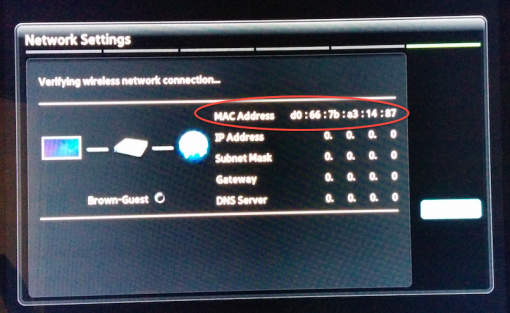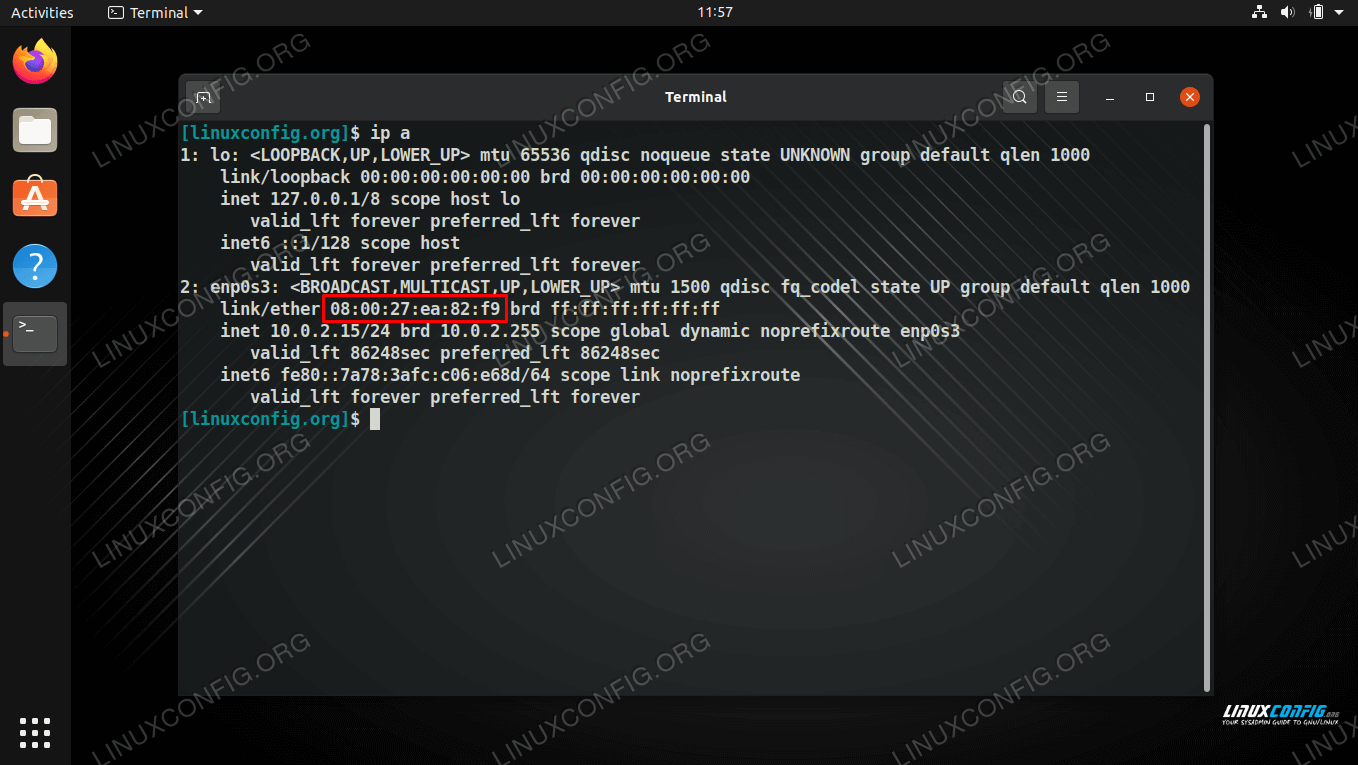

You can always check the man page for more details. Once you reboot the system, the changes will be automatically lost, and the actual MAC address will be restored again.

:max_bytes(150000):strip_icc()/001_how-to-find-your-chromebook-s-mac-address-4802491-2b0897bd379c49bba12782bcb71cb1fa.jpg)
Where XX:XX:XX:XX:XX:XX is the new MAC id that you want to change.įinally, to revert the MAC address to its original hardware value, run the following command: macchanger -p enp0s31f6 To change the MAC address to a specific value, specify any custom MAC address using command: macchanger -mac=XX:XX:XX:XX:XX:XX You will now see that MAC has been spoofed. Now, to assign any random MAC address to this network card, use: sudo macchanger -r enp0s31f6Īfter changing the MAC id, verify it using command: ip addr
#How to check mac address in terminal how to#
How to Use Macchanger to change MAC addressĭo you remember your network interface name? You got it in the Step 1 earlier. So, choose No (by pressing tab key) and hit Enter key to continue. I recommend not to run it automatically, unless you really need to change your MAC address every time. This gives a new MAC address whenever you attach an Ethernet cable or re-enable WiFi. Important! You’ll be asked to specify whether macchanger should be set up to run automatically every time a network device is brought up or down.
#How to check mac address in terminal install#
On Debian, Ubuntu, Linux Mint, Kali Linux: sudo apt install macchanger On Fedora, CentOS, RHEL: sudo dnf install macchanger On Arch Linux or Manjaro: sudo pacman -S macchanger It is available in almost all GNU/Linux operating systems and you can install is using the package installer of your distribution. Macchanger is simple utility to view, modify, and manipulate MAC addresses for your Network interface cards. Method 1: Change MAC address using Macchanger So either try this method on an additional card or be prepared to restart your network. This means that 2 24 (= 16.777.216) unique OUAs can be assigned per OUI.If you do this on a network interface which is currently in use, probably your network connection will be terminated.

Bit 1 (receiver): The first bit of the MAC address specifies whether it is an individual or group address.The bit sequence of each MAC address is divided into 4 areas, each of which encodes different information.


 0 kommentar(er)
0 kommentar(er)
